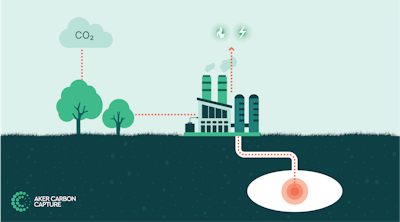Introduction
Last week, the European Commission presented its highly anticipated proposal for a certification scheme for voluntary carbon removals to help reach net-zero emissions. The proposal will boost and support innovative carbon removal technologies and sustainable carbon farming solutions and contribute to EU climate goals under the European Green Deal. The proposed regulation will also significantly improve the EU’s ability to quantify, monitor and verify carbon removals while emphasizing high transparency from stakeholders and industry.
The proposal is essential to the overarching EU goal of becoming the first climate-neutral continent by 2050. To do so, industrial technologies such as bioenergy with carbon capture and storage (BECCS) or direct air carbon capture and storage (DACCS) must be deployed and supported due to its inherent ability to capture carbon dioxide from the atmosphere and store it permanently – contributing to negative emissions.

Policy Advisor
Background
The European Green Deal is the EU’s defining climate policy package, which solidifies its long-term growth strategy to make Europe climate-neutral by 2050. This is a goal that puts the EU on the forefront of tackling climate change but requires bold action. There are several legally binding climate goals in EU legislation, one of them, the European Climate Law signed in 2021, requires the EU to achieve an equilibrium between greenhouse gas emissions and removals by 2050, and to achieve negative emissions after. While progressing towards the net-zero goal, ambitious near-term targets are paramount to guarantee a steady track. This is the purpose of the “Fit for 55” policy package, which aims to reduce EU greenhouse gas emissions by at least 55% by 2030 and makes it a legal obligation. The EU Commission’s carbon removal proposal offers a crucial potential to achieve the EU’s long term climate objectives under the Paris Agreement and realize the European Green Deal.
Main Takeaways from the Proposal
The proposed scheme establishes a system for the certification, monitoring, and accounting of carbon dioxide removals in the EU and is based on overarching criteria, such as:
- Quantification: carbon removal activities need to be measured accurately and deliver unambiguous benefits for the climate
- Additionality: carbon removal activities need to go beyond existing practices and what is required by law
- Long-term storage: certificates are linked to the duration of carbon storage noting a preference towards permanent storage
- Sustainability: carbon removal activities must preserve or contribute to sustainability objectives such as climate change adaption, circular economy, water and marine resources, and biodiversity
Methodology-wise, the Commission supports removals via these methods:
- Permanent storage: industrial technologies such as BECCS (bioenergy with carbon capture and storage) or DACCS (Direct Air Capture with Capture and Storage) capture carbon from the air either indirectly (through the processing of biomass in the case of BECCS) or directly (in the case of DACCS) and store it in a stable form
- Carbon farming: carbon can be naturally stored on land through activities that enhance carbon capture in soils and forests
- Carbon storage in products: atmospheric carbon capture by trees or industrial technologies can also be used and stored in long-lasting products and materials, such as wood-based or carbonate-bonded construction materials

What are the next steps and what needs to happen?
Following the proposal, the European Parliament and European Council will analyze and discuss the proposal, after which they will draft their response for further evaluation. There is currently significant attention around the proposal, especially after COP27 CDR talks did not develop the way many had hoped for and were essentially sent back to the Paris Agreement Article 6.4 Supervisory Body until next year. This presents a significant opportunity for the EU to show a strong leadership position on carbon removals. The global community is constantly reminded of the urgent need for strong deployment of carbon removal technologies, and the recent IPCC report confirmed the necessity to strongly pursue negative emissions in addition to emissions reductions to help avoid the worst effects of climate change.
The proposed framework must ensure the EU’s ability to quantify how much CO2 is being removed, how much is being emitted in the process of doing so, and how to make sure stored CO2 is not exposed to the atmosphere permanently. Moving forward, the proposed framework should introduce a clearer and more robust definition of CDR to differentiate between what actually counts as carbon dioxide removals, and what does not. This should follow the principle of CO2 being physically removed from the atmosphere. Given the captured CO2 is permanently stored, the total volume of CO2 emitted across the value chain (for transport, utilities etc) should be less than the total volume of CO2 stored, aiming for a net positive climate benefit. Life Cycle Analysis, also known as LCA’s, will be key to determine the overall carbon footprint of each CCUS value chain.
Conclusion
Overall, the Commission’s certification framework for carbon removals is a step in the right direction and welcomed as the EU clearly distinguishes between reduction/avoidance and removal credits. BECCS and DACCS will significantly contribute to the EU’s climate goals, which is why it is paramount to facilitate this proposal with clear and transparent policy mechanisms that will support carbon removals. The proposal currently builds on pre-existing policy provisions and climate change legislation such as the CCS Directive and EU ETS Directive, and urges removal activities to contribute to removing several hundred million tonnes of CO2 per year from the atmosphere. However, in a time which demands immediate action, specific targets for CO2 removed from the atmosphere and permanently stored through BECCS and DACCS will take EU climate ambitions even further.
These targets will guide and further incentivize early-movers, which should be a priority after stark COP27 reminders. Partnerships and initiatives are key actions that will drive energy transition forward. Aker Carbon Capture, Ørsted and Microsoft have committed to such early action to explore possibilities of developing carbon capture at biomass-fired heat and power plants, which unlocks opportunities for carbon removals. More on this here: Aker Carbon Capture, Ørsted and Microsoft commit to explore development of carbon capture – Aker Carbon Capture AS (cision.com)



